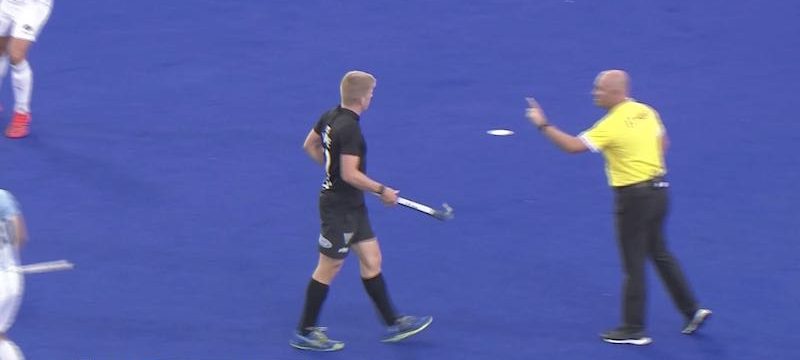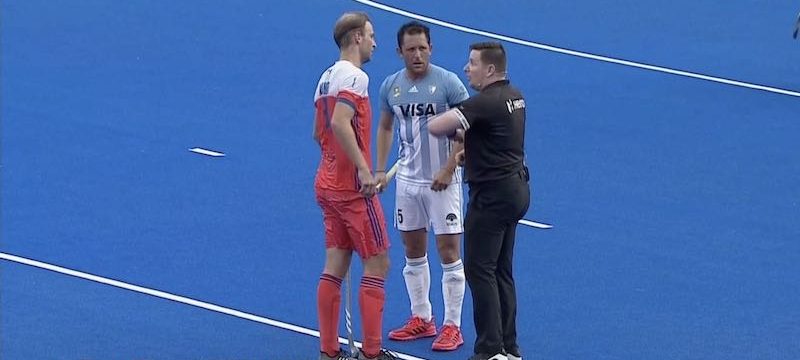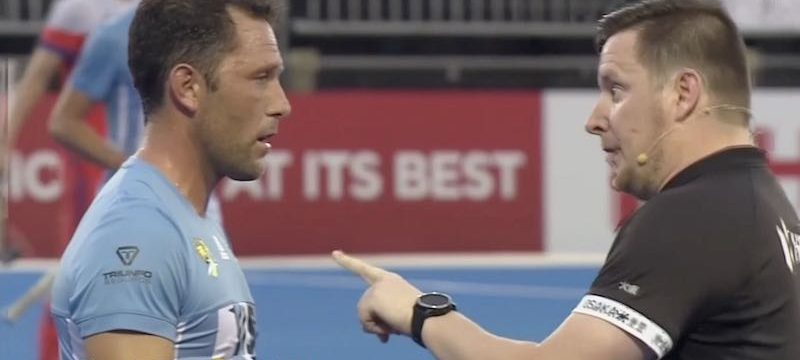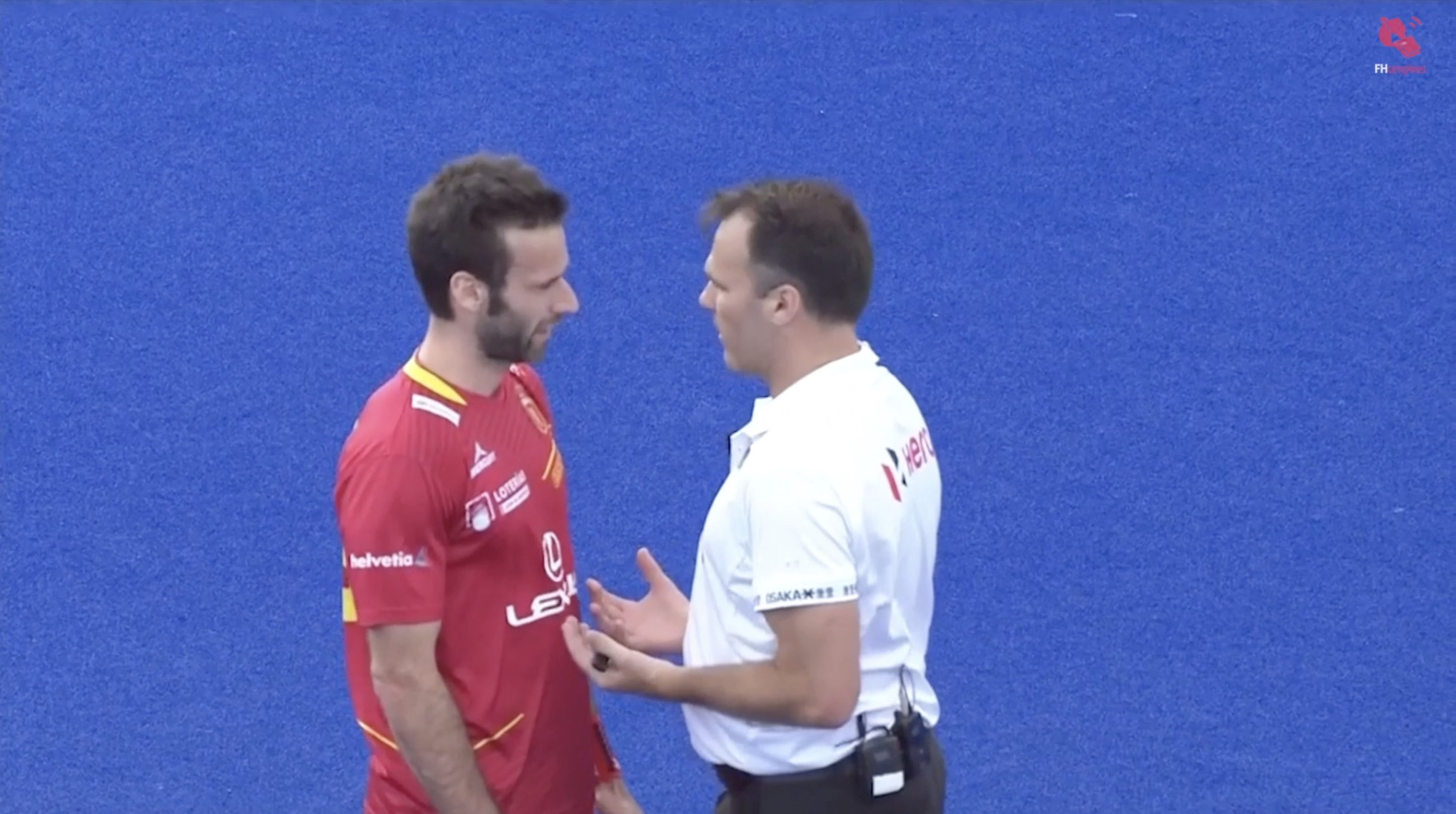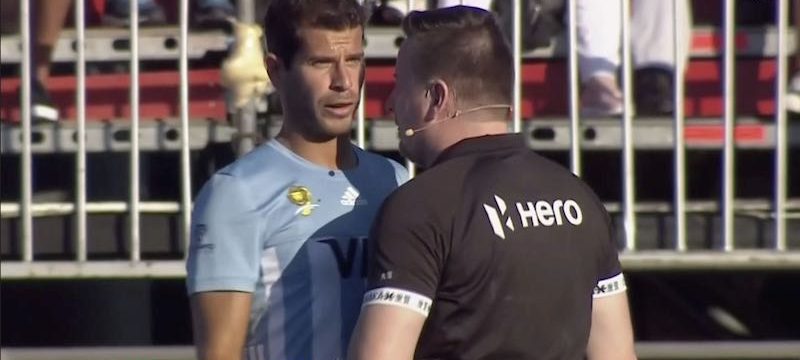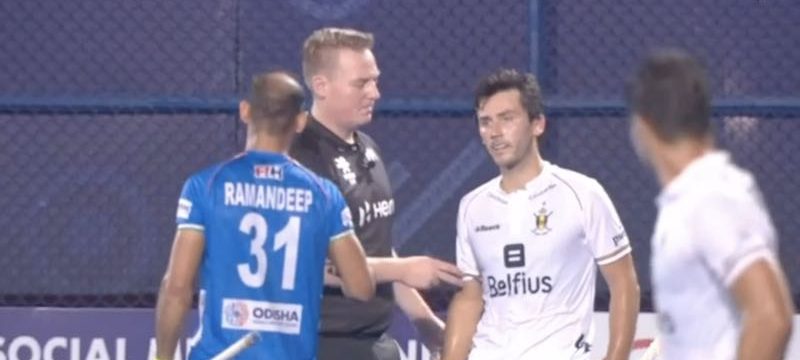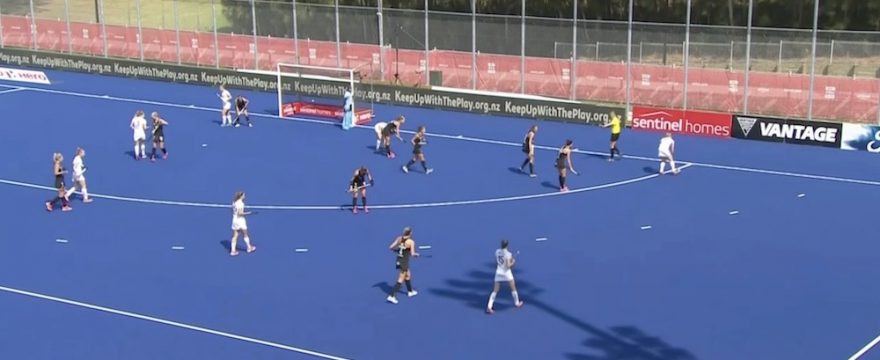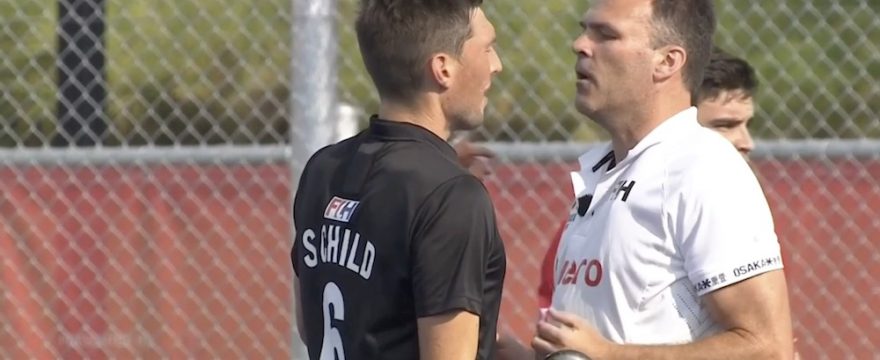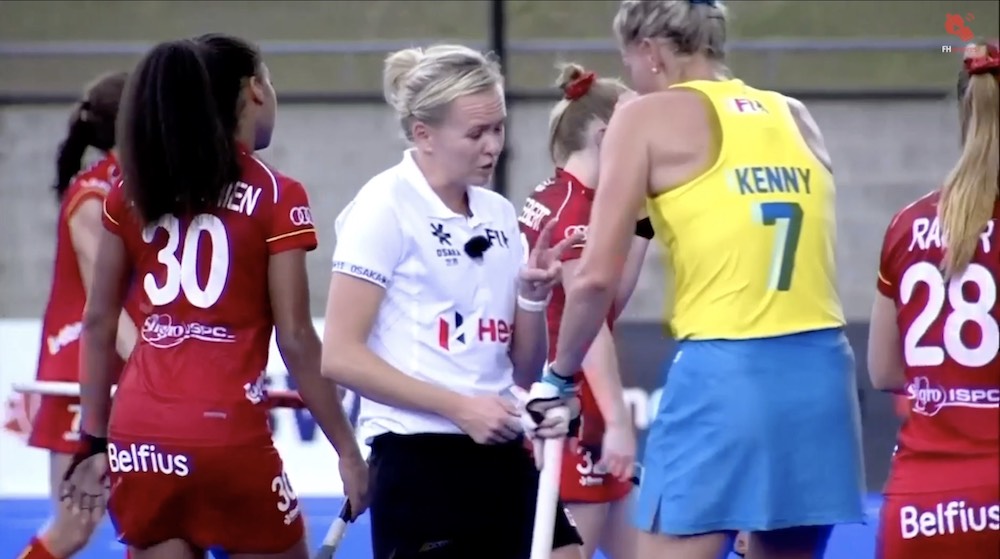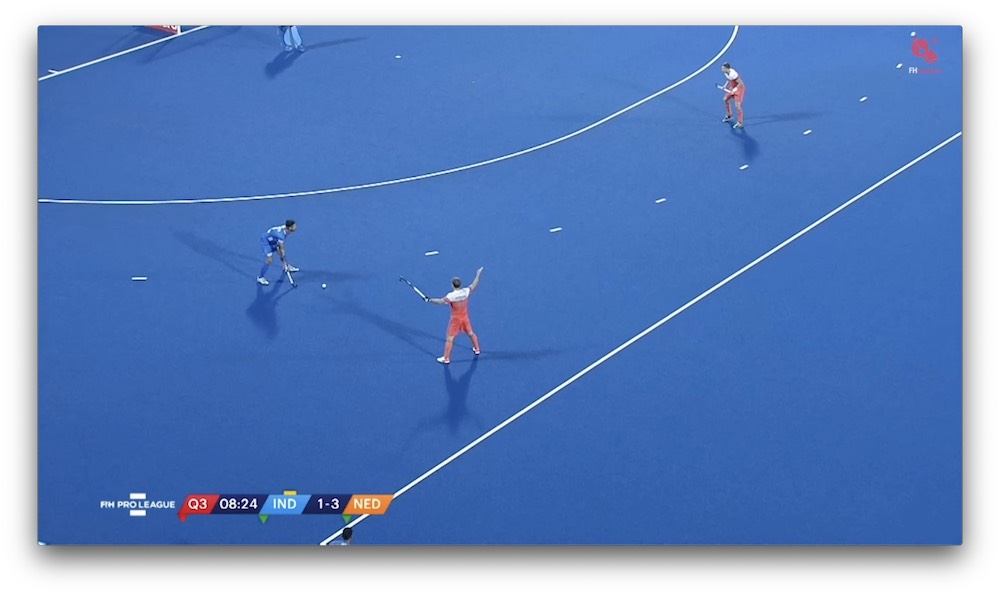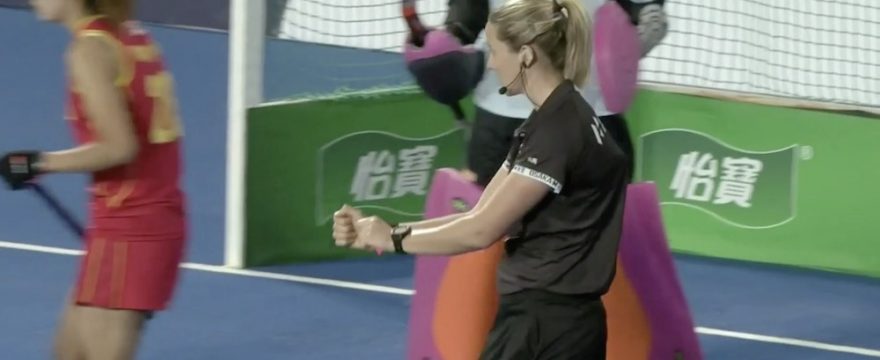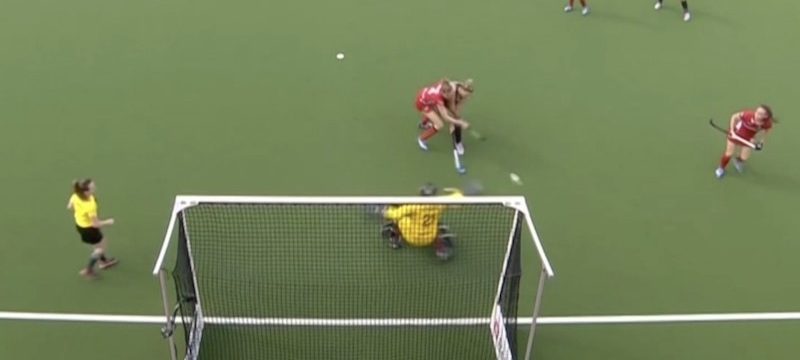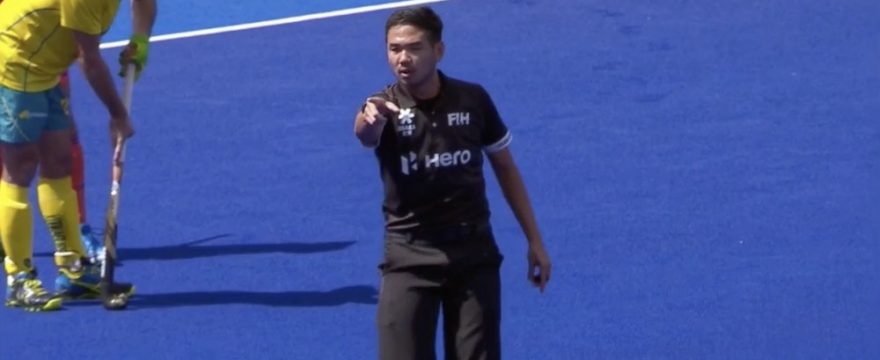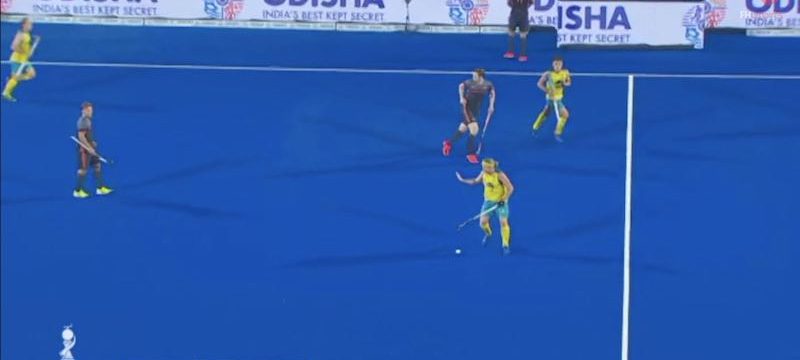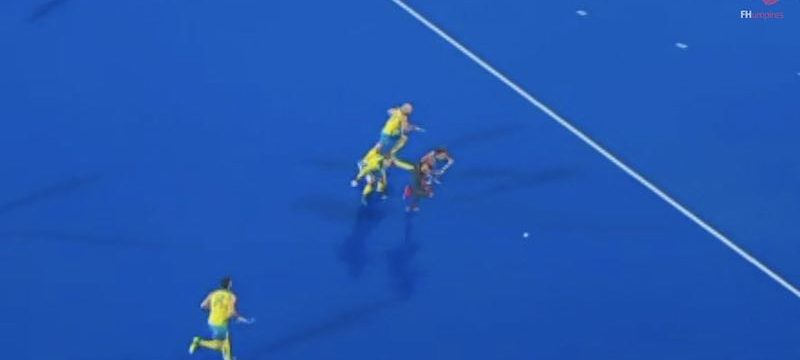After awarding an obstruction foul just outside the circle, the attacker visibly (and presumably audibly) berates the umpire. The umpire immediately communicates back to him, sending a clear message …
ARGvNED Stop time captains
The umpire calls for the captains to have a discussion about physical play off the ball. Early in a game, this is an excellent strategy for player management, inviting the captains to take …
ARGvNED Stop time 2nd warning captain
The umpire here stops time after some shouting and brings the ARG captain in for another chat. The body language here is more positive than the previous attempt, and the captain seems to make an …
Continue Reading about ARGvNED Stop time 2nd warning captain →
NZLvESP Player management
In fiery, physical matchups where tempers can really get out of control, player management is a crucial part of both your skillset and your #thirdteam match plan. Adam Kearns shows some of his …
ARGvNED Verbal warning for dissent
Early in the first game of this two-match home-and-home set, the umpire chooses to set the tone of the communication he will not be accepting. The involved player protests that an earlier foot had …
ARGvNED Verbal warning to captain to calm players
After a minor collision, two players have some “afters”. The umpire stops time, brings over the captain of the initiator and presumably asks for her assistance in controlling her players. Taking care …
Continue Reading about ARGvNED Verbal warning to captain to calm players →
NZLvESP Verbal warning for dangerous use of stick
The umpire warns the fouled attacker about flicking his stick up in reaction to the stick obstruction foul. In isolation, this is an excellent intervention. However, we’ve already seen a green card …
Continue Reading about NZLvESP Verbal warning for dangerous use of stick →
INDvBEL Stop time temper management
This is the first show of any tempers in the game, which has just under 10 minutes to go. It’s easy to get lulled into complacency when things have been going so well, but the umpire steps in at the …
Continue Reading about INDvBEL Stop time temper management →
ARGvESP Stop time management
The umpire stops time to send a calming message to the player that when he’s unsighted, it’ll take a moment to get the message through the radio to get to the correct decision. The game had been …
NZLvBEL 5m from free hit inside dotted line
Very similar to the play in Q2, a free hit awarded right on the circle edge has a delay before the play can be restarted. This time, the umpire ensures the defenders stay 5m from the spot of the foul …
Continue Reading about NZLvBEL 5m from free hit inside dotted line →
NZLvBEL Management
The umpire takes an opportunity early in this game to set the standard for communication from the players. After the message isn’t received as well as he would like, the umpire formally stops time and …
AUSvBEL Stop-time management with captain
The umpire uses a lightning interruption as an opportunity to have a word with the captain about her players tapping the ball away after the whistle. This is an excellent management step and should …
Continue Reading about AUSvBEL Stop-time management with captain →
INDvNED Management of time-wasting
It’s a small thing, but because it’s managed properly it prevents a problem from developing later in this game. With the blue team defending a 10min yellow card, they are presented with a 15m free …
CHNvBEL Management of players pushing in circle
As the ball is being situated for a 23m restart, the players begin jostling for position in the circle. The umpire uses her whistle to get the players’ attention and prevents the ball from being put …
Continue Reading about CHNvBEL Management of players pushing in circle →
BELvNZL Stickwork in the circle
When the ball is on the opposite low side of the circle, it’s almost impossible to see exactly what may be going on through the players’ backs. This is where off-ball supporting umpire assistance is …
ESPvARG Aerial dangerous on way up and management
An aerial is thrown dangerously on the way up, so the free hit is awarded at the take off rather than the receiving area. The umpire then takes a moment to manage this dissent by stopping time and …
Continue Reading about ESPvARG Aerial dangerous on way up and management →
AUSvNED Verbal warning to leave the ball
After an unsuccessful tackle leading to a clear and obvious body obstruction, a teammate follows through on the clearance perilously close to after the whistle. The controlling umpire uses a very …
Continue Reading about AUSvNED Verbal warning to leave the ball →
AUSvNED Playing ball after whistle warning
This is the first time a player has played the ball after the whistle in this game but, given the number of seconds left in the half, the effectiveness of this misconduct to prevent any last-second …
Continue Reading about AUSvNED Playing ball after whistle warning →
AUSvNED Advantage and breakdown warning
In the first passage of play, the far side umpire plays an advantage from a foot foul as the ball pops into a lovely bit of central space where the attacker has the opportunity to control positively. …
Continue Reading about AUSvNED Advantage and breakdown warning →
